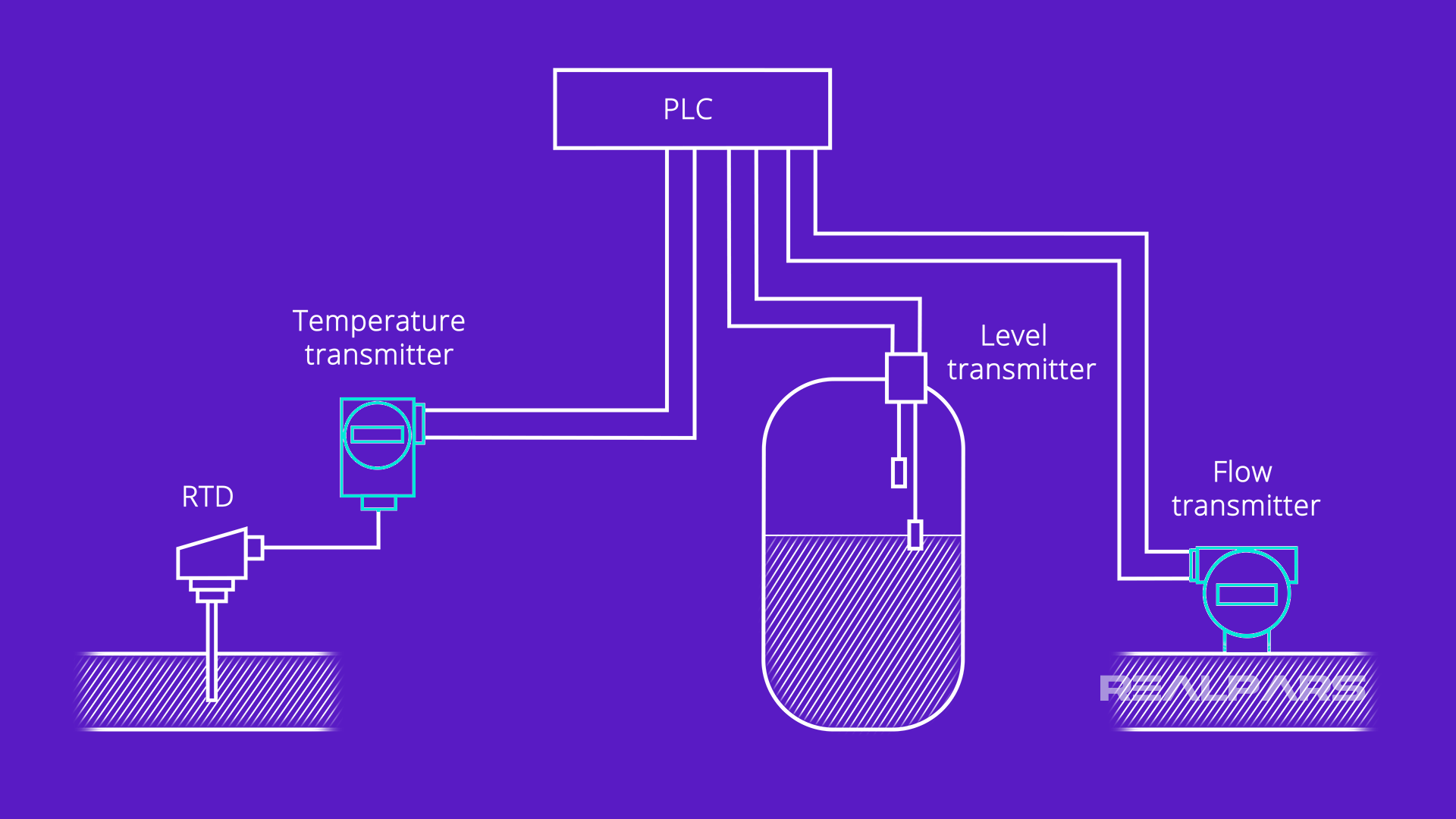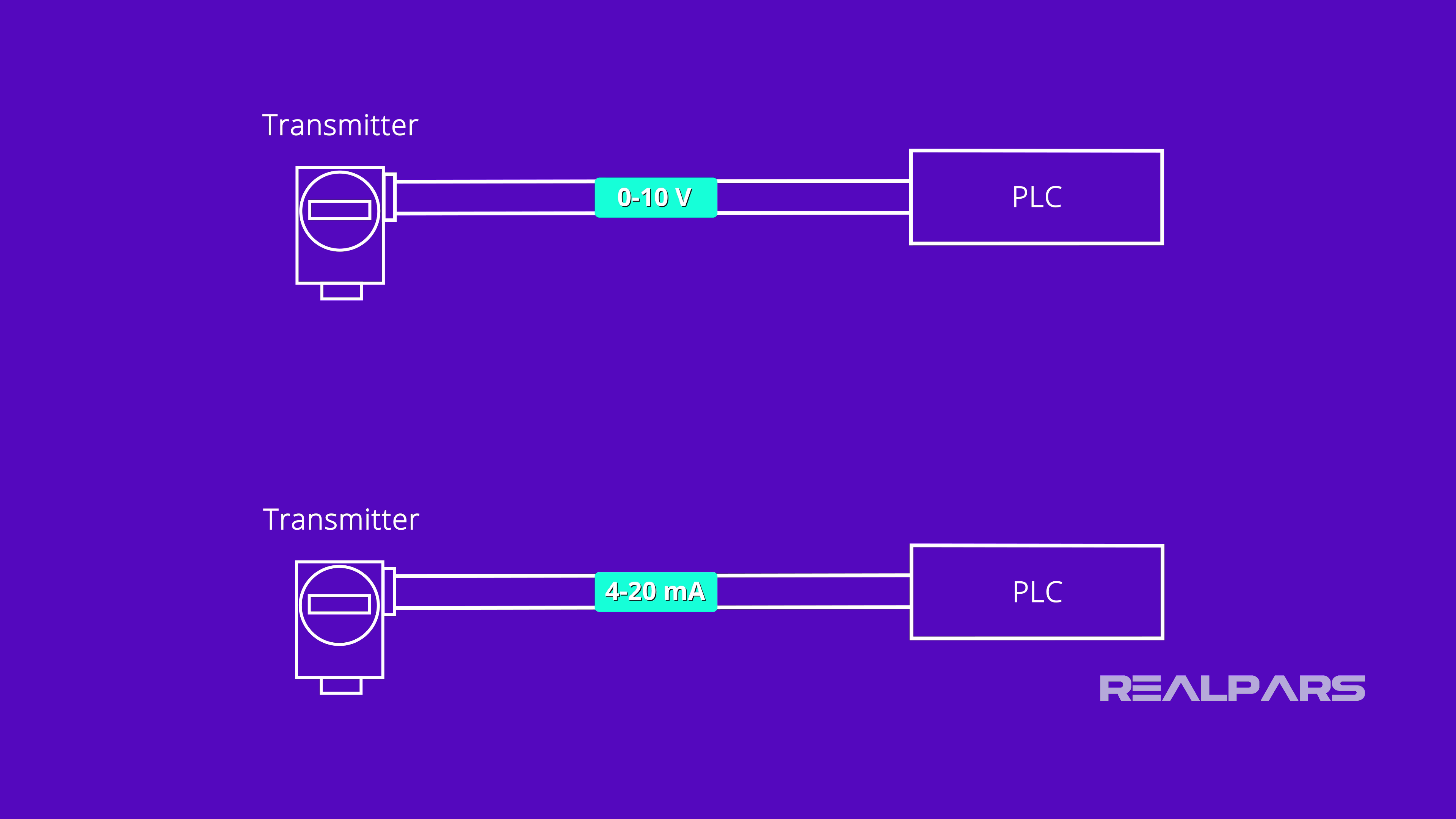What are 2-wire and 4-wire Transmitter Output Loops?

In this article, we’re going to take a close look at the 2-wire transmitter and 4-wire transmitter and discuss where they are used and why.
We’re also going explore transmitter wiring configurations and how transmitters are connected to a PLC.
Before we get started, you might want to review our article called PLC Analog Inputs and Signals.
What is a Transmitter?
A transmitter is an instrument that converts the small signal from a sensor to a signal which represents the variable being measured.

Transmitters come in all different shapes and sizes and connect with several types of sensors.

The transmitter output signal representing the variable being measured can be voltage or current.

Transmitter analog output loops
A transmitter analog output loop contains the transmitter, power supply, and the receiving device which could be a PLC or DCS.
Just like any other instrument, transmitters need a power supply to operate. But, is it a 2-wire or a 4-wire transmitter?
The actual wiring connection between the transmitter and the power supply depends upon which type it is. We will come back to that later.

Advantages of 4-wire transmitters
So what’s the difference between two wire and four wire transmitters? Earlier we said that the transmitter output can be either current or voltage.
Current is by far the most common transmitters output signal for many reasons.
One reason is if the wires between the transmitter and the PLC are very long, there could be significant voltage losses across these wires.
Regardless of the length of wire in a current loop, basic electrical theory tells us that the current is the same in the circuit regardless of where that current is measured! So…no loss at all!

4-wire transmitters
Okay, we’ve covered some basics, now let’s dig a little deeper.
A 4-wire transmitter has 2 wires connected to a power supply, and 2 signal wires connected to the PLC.
The power supply can be AC or DC depending upon the vendor and model.

2-wire transmitters
As its name states, a 2-wire transmitter has only 2 wires.
In a 2-wire current loop, the transmitter, DC power supply, and PLC are connected in series. Not only are the 2 wires providing power for the transmitter, but they are also the signal lines!

2-wire transmitter current loop diagram
Let’s have a look at how a typical 2-wire current loop is shown on a loop diagram.
As illustrated, the 24-volt power supply is in series with the differential pressure transmitter and the PLC analog input card.

Summary
Let’s review what we’ve learned today…
– A transmitter is an instrument that converts the small signal from a sensor to a signal which represents the variable being measured.
– A transmitter analog output loop contains the transmitter, power supply, and the receiving device such as a PLC.
– The actual wiring between the transmitter and the power supply depends upon whether it is a 2-wire or a 4-wire type.
– A 4-wire transmitter has 2 wires connected to a power supply, and 2 signal wires connected to the PLC.
– A 2-wire transmitter has only 2 wires and is connected in series with the power supply and the PLC.
Want to Learn More?
If you would like to get additional training on a similar subject please let us know in the comment section.
Check back with us soon for more automation control topics.
Got a friend, client, or colleague who could use some of this information? Please share this article.
The RealPars Team
Learn from
industry experts
with a free 7-day trial, then $25/month


